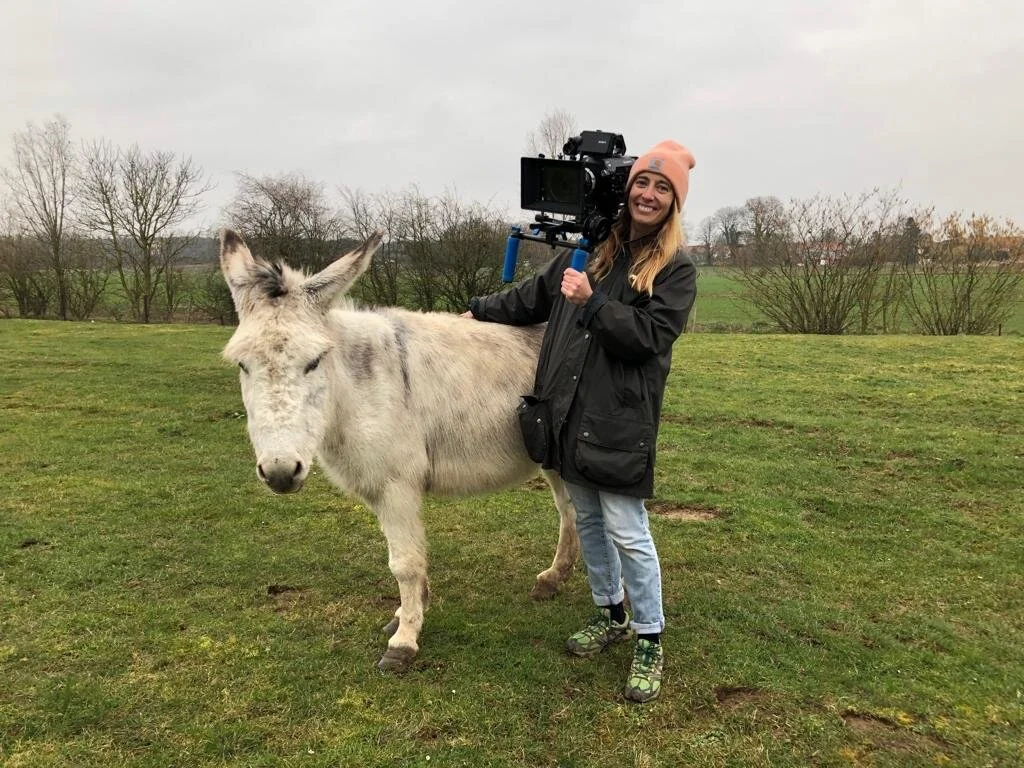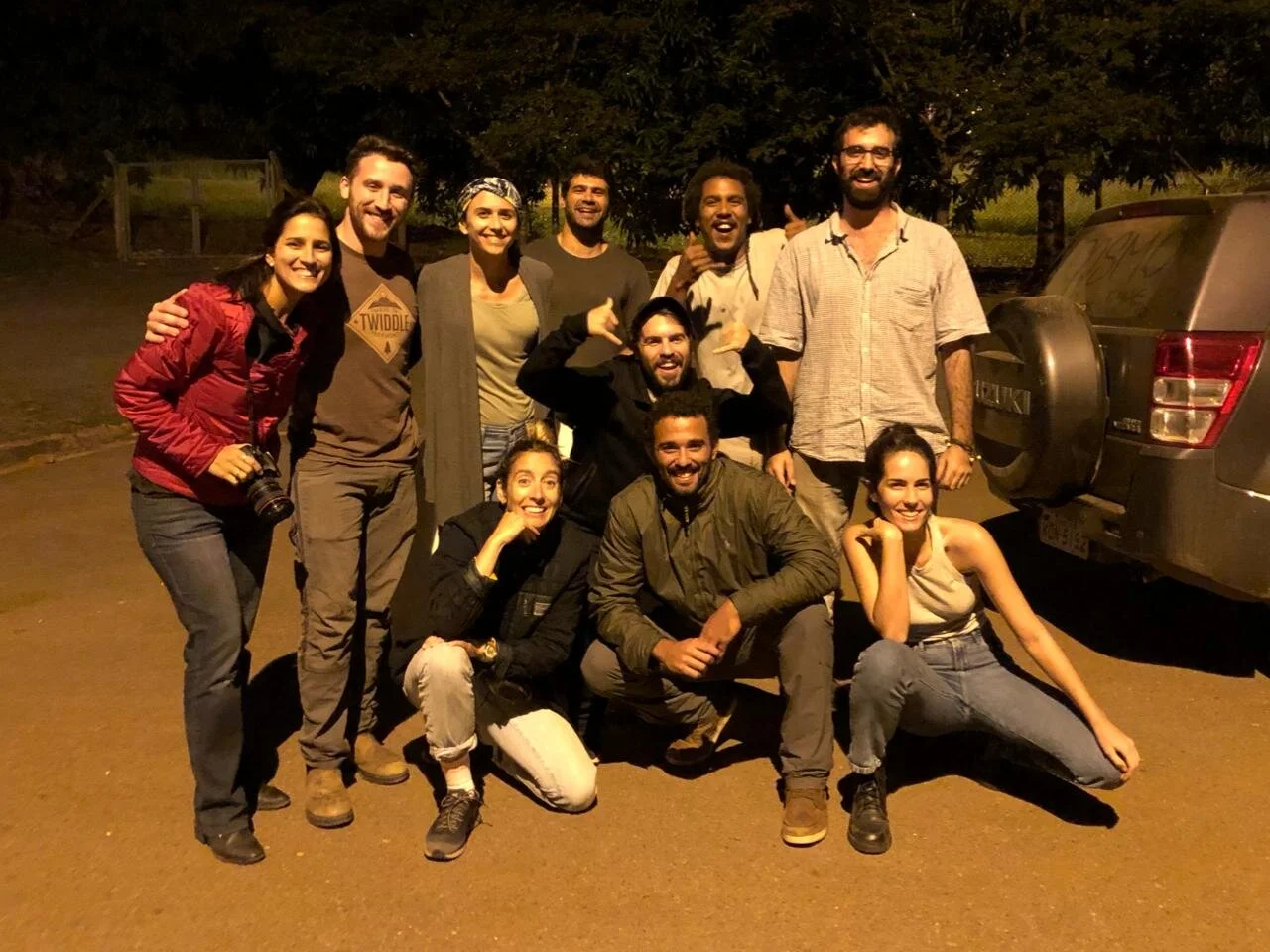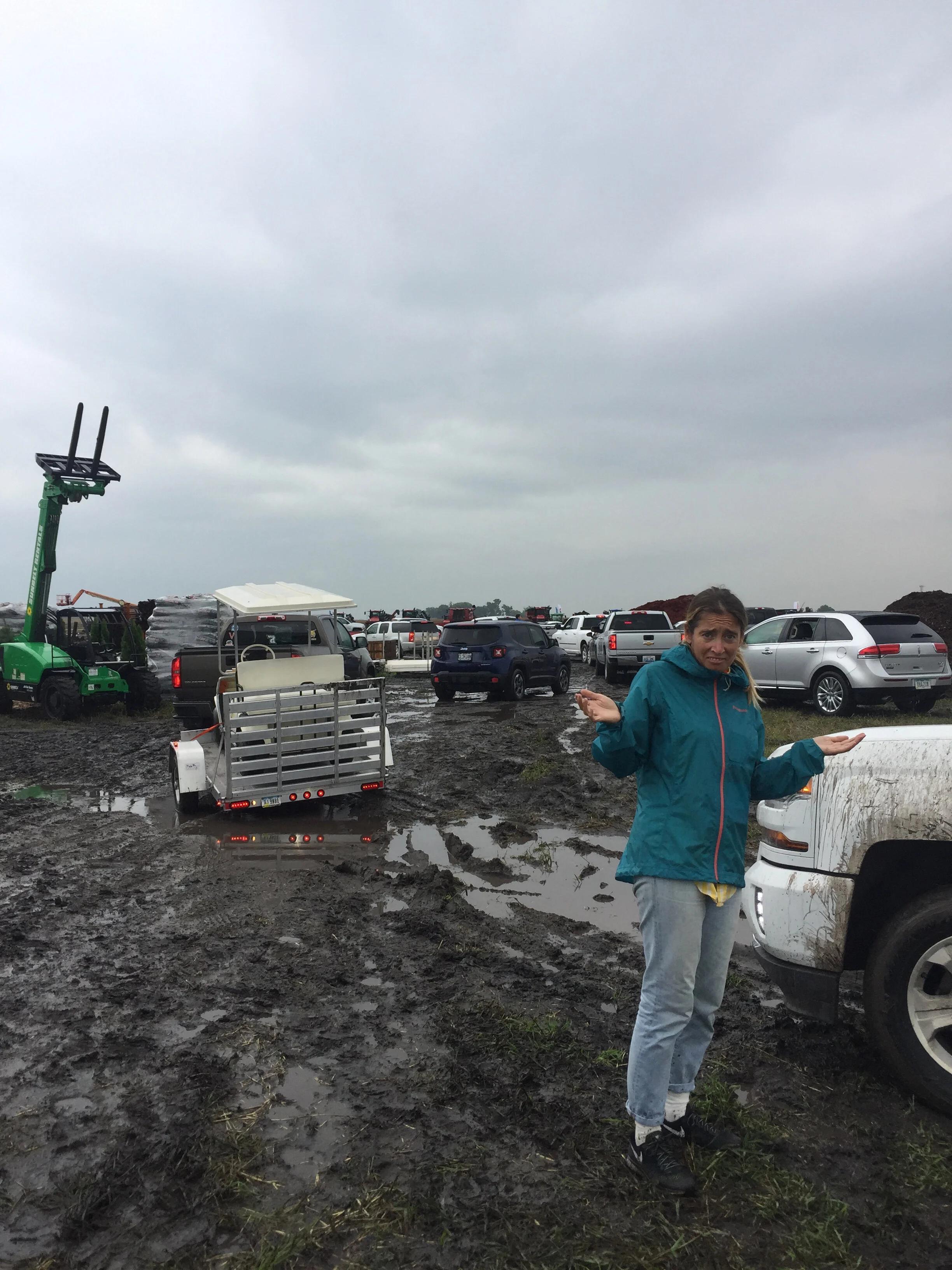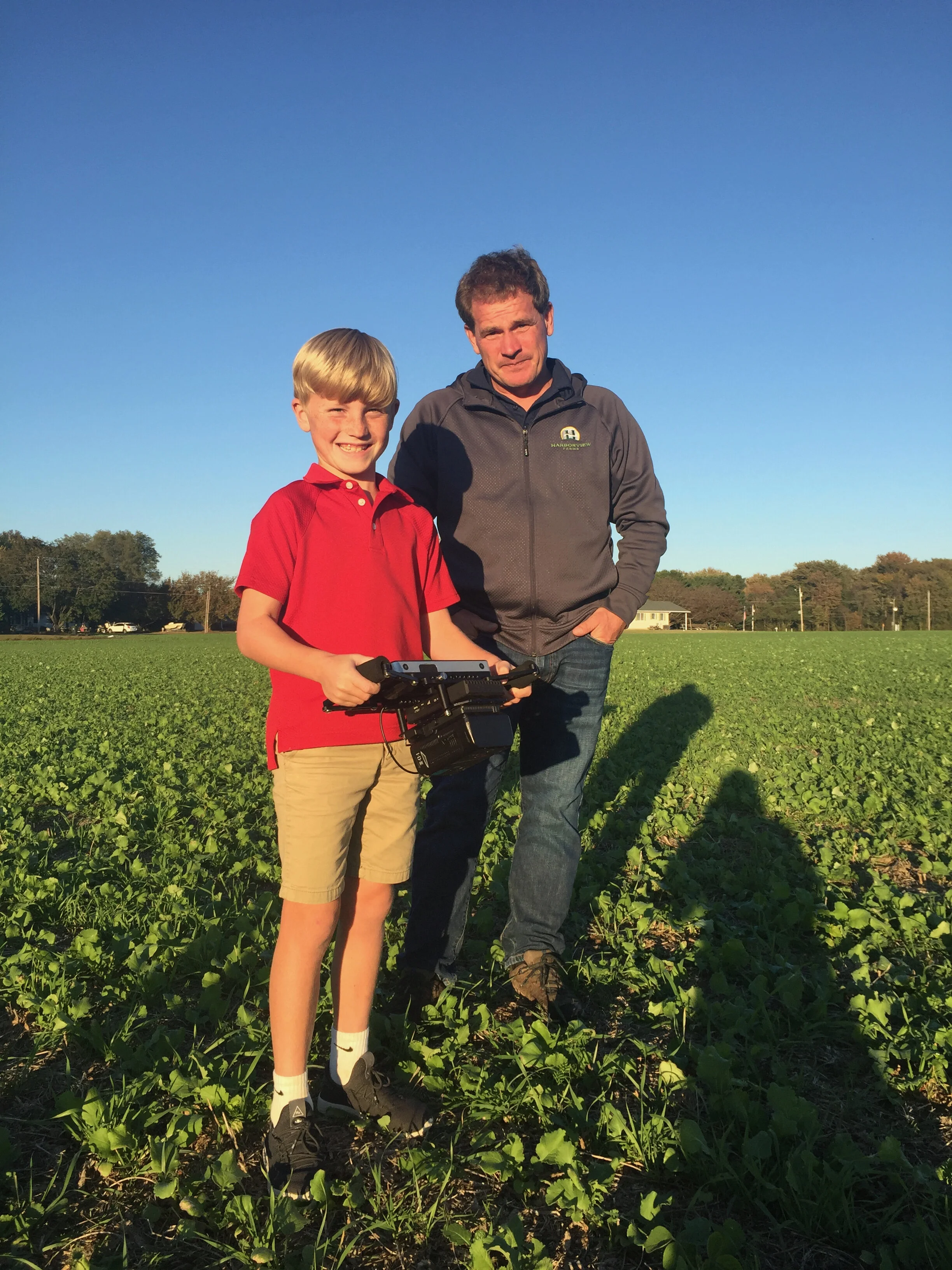Field Notes: My Year in Farming.
Not last birthday but the one before that, I celebrated in a field dodging lightning. I was in Iowa to interview farmers at the world’s biggest farm fair when the fairground staff began a hurried evacuation. Lightning was hitting the ground so close-by that we were in danger. So much rain fell that the fields designated for parking instantly flooded, and even though everyone was driving massively oversized trucks, we all got stuck in the mud. I spent my birthday trapped, thinking about how I was going to explain my lack of footage, and why after not that much rain, monster trucks were rendered as useless as my economy rental car.
I didn’t know it at the time but that was the start of a year’s long adventure, making films about the global state of agriculture for Corteva. The project has come to an end, so I thought I would share some of my favorite stories.
Internationally, I traveled to France, Brazil, and nearly Argentina. Domestically, I checked off states I wasn’t likely to visit on my own: Iowa, Indiana, Nebraska, Georgia — and one place that I should have visited a long time ago, The Chesapeake Bay, Maryland.
I interviewed first-generation farmers and fourth-generation farmers. I interviewed crop gene researchers, app builders, scientists, wives, drone pilots, CEOs, the head of the Soybean Growers Association, and lots and lots of farmers.
I saw first-hand the AgTech revolution at work in Brazil, and the food deserts in low-income areas of Atlanta. I dodged farm machines that were twice as large as my Chinatown apartment, I sucked sugar from raw cane in a field, and argued with the 80-year-old mayor of an agricultural town. I donned a hazmat suit and followed gene researchers into sealed greenhouses, I turned milk into butter with a group of wide-eyed French schoolchildren, and I got up way too early to film some spectacular sunrises.
The definition of ‘farmer’ has morphed too. In ‘Living Roots’ Trey Hill’s wife joked that when she signed up to marry a farmer, she hadn’t realized that farmers were basically CEOs who sat in front of computers all day — his nails were dirt free. Then we met Jamilla Norman in Atlanta — a CEO of one and leader of a ragtag group of volunteers. She’s on her farm all day, every day; planting and harvesting manually, packing and labeling for sale at the local farmers market.
The heart of all the stories lay in the people on the farms. I loved meeting urban farmers Pee and Lovey in ‘The Farm Next Door’ the most. Listening to the couple talk about slavery and sharecropping, and how they have to look past that in order to keep planting, was humbling. Watching them work, as they do daily, to provide an underserved community with fresh food is doubly humbling. I cry every time I watch the film.
I particularly enjoyed directing films with animals. My favorite moment was witnessing a standoff between goats and chickens over a lettuce. You had to be there. On the educational farm in France, I filmed Chantal Leguay tagging the ears of the baby lambs. The lambs didn’t even flinch and it was great to watch in person, but back home the event felt violent in the edit, so I removed it. And I once pierced a schoolfriend’s ear with a pen.
The moments between filming were never dull: On a scout day, we kidnapped a farmer and forced him to eat his first McDonald’s. He protested of course, so we used the drive-through and what a surprise, he loved every moment of his double cheeseburger meal. Arriving two days early to a quintessential small farm town in Washington, I walked into the only bar. The bartender greeted me with “He’s waiting for you in the back room”. Who was he? How did he know who I was? And what was he waiting for? It was small-town gossip at its finest. My crew and I visited every Goodwill store we passed. We visited the world’s largest marble museum, in tiny York, Nebraska. The marbles were O.K. but the rest of the store was like Aladdin’s cave, I bought gold costume jewelry and colorful 1960s planters that were a real bitch to get safely back home. I wear one of the rings daily and when it catches my eye, I laugh at how lucky I am that this is my job.
So that’s a wrap on the film series. Looking back, I’ve had to grapple with my own values as I directed the films. I’m a vegetarian, I hate any mistreatment of animals, I’m an environmentalist, and I try to speak up when I see racist behavior, so moments stretched my comfort levels. But as crops don’t grow without light—and a little chemical fertilizer — you don’t grow when you don’t learn. And I enjoyed every moment of it.






























